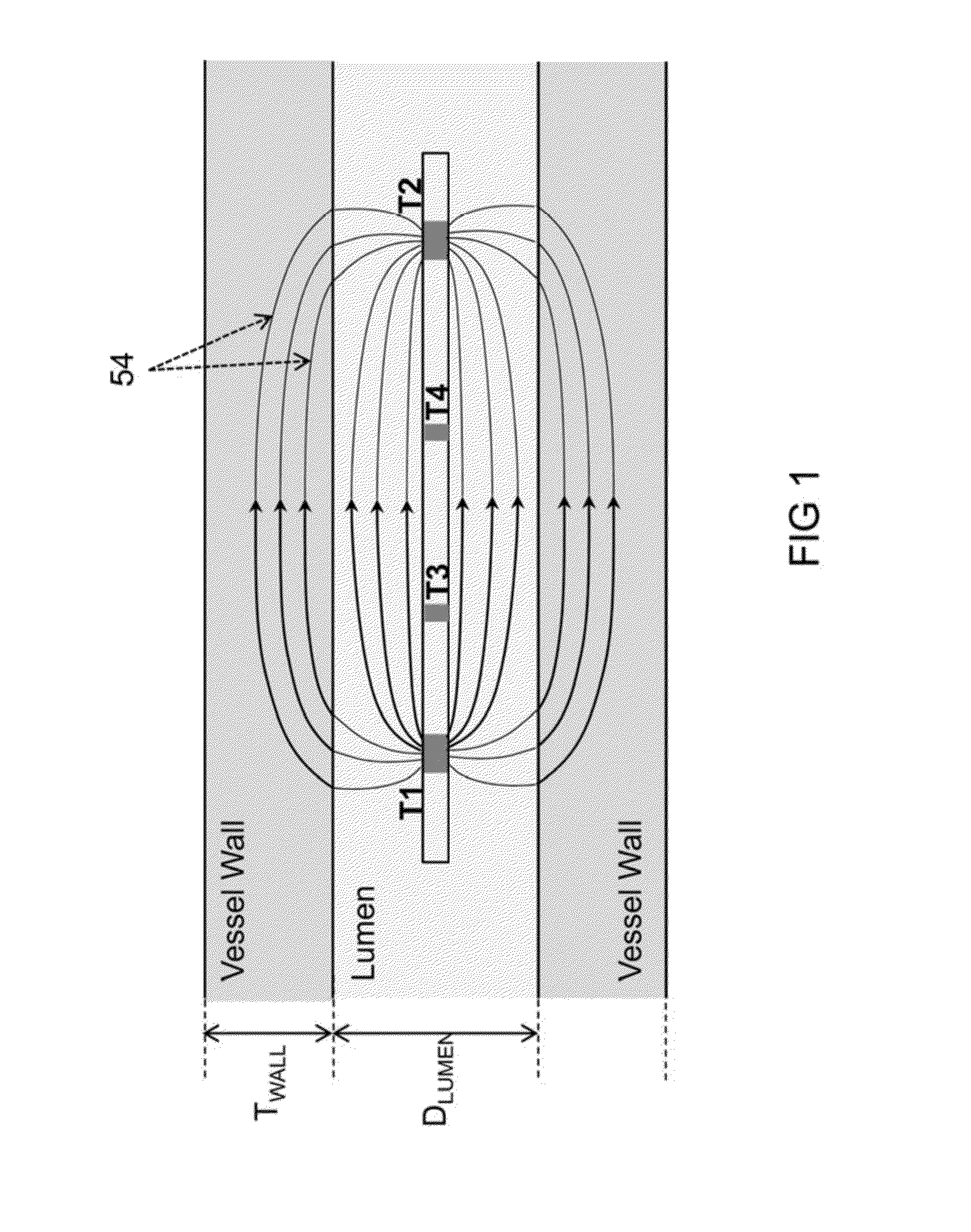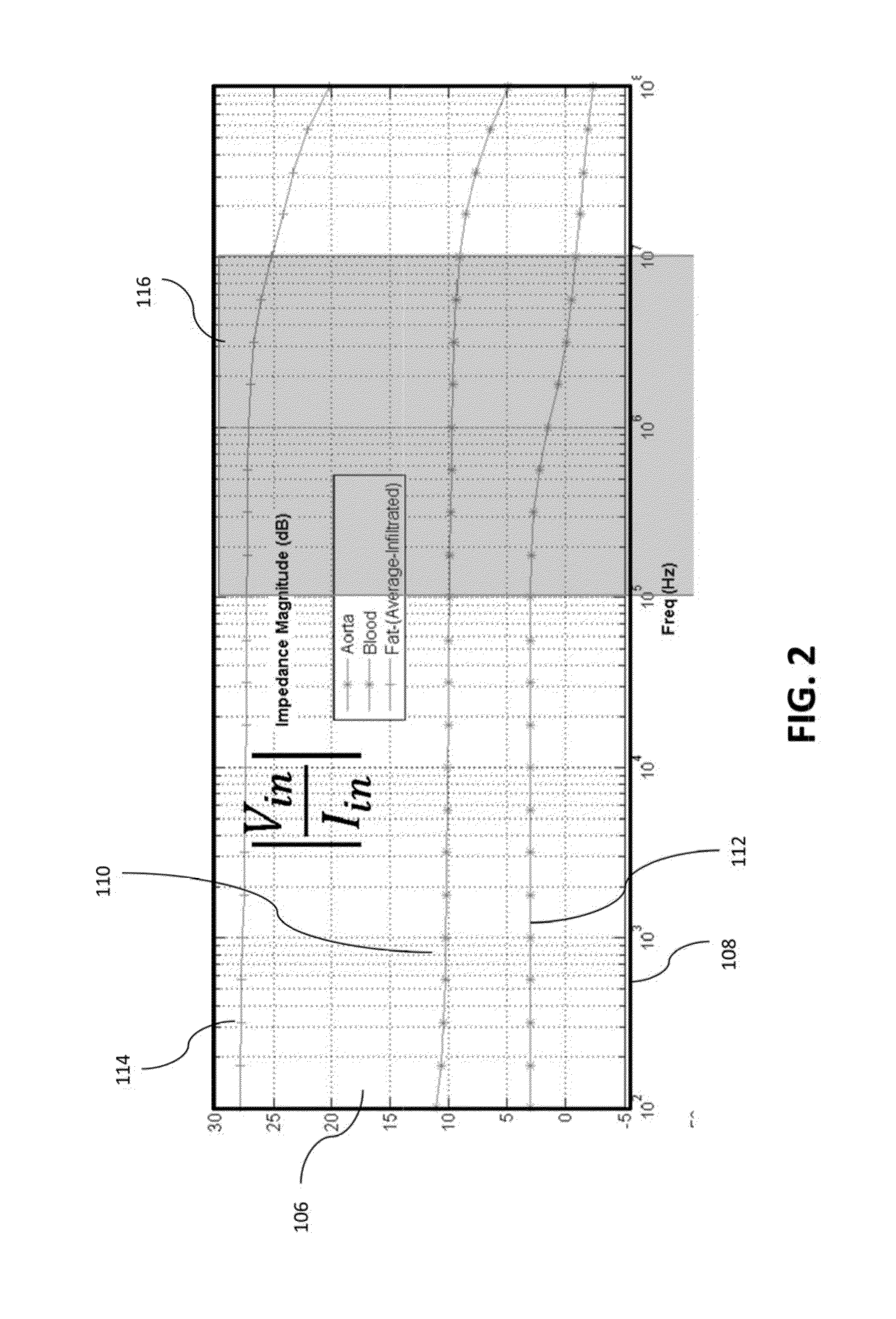Multifunctional guidewire assemblies and system for analyzing anatomical and functional parameters
a multi-functional, guidewire technology, applied in the field of multi-functional guidewire assemblies and system for analyzing anatomical and functional parameters, can solve the problems of increasing the time and complexity of the procedure, inconvenient for patients, and high cost of methods
- Summary
- Abstract
- Description
- Claims
- Application Information
AI Technical Summary
Benefits of technology
Problems solved by technology
Method used
Image
Examples
example 1
[0261]In an exemplary implementation, the excitation frequency band was chosen between 40 KHz (fL) to 10 MHz (fH) based on the electrical characteristics of blood, tissue and fats. A 16 bit D / A converter was chosen to operate at a sampling rate of fs (=20 MHz). The chosen D / A converter accepts offset binary sequence (0x0000 for the lowest value and 0xFFFF for the highest value). The Most Significant Byte of the converter is toggled according to the single bit pseudo random pattern, while the next bit was kept permanently at logic 1. All other bits were kept at logic 0. Hence the D / A input toggles between 0x4000 and 0xC000, depending on a 0 or a 1 from the pseudo random generator. The pseudo random generator resides on a back end entity and is comprised of a chain of 9 D-flipflops referred to as flops, to represent a 9-tap pseudo random sequence. The resultant sequence is a maximal length pseudo random sequence with length of L=511 (29−1). The generator polynomial used to generate th...
example 2
[0265]In yet another implementation, as shown in FIG. 15, an OFDM sequence is constructed using Nfreq (=256) discrete tones of equal amplitudes and each being at a random phase. The phase angles for each tone are adjusted so as to obtain the PAR lower than 1.4. The construction of the OFDM sequence can be done either simply by adding all the discrete tones together or, by performing a IFFT (Inverse Fast Fourier Transform) of a symmetric sequence of 2Nfreq (=512) complex numbers, where the first 256 complex numbers relate to the amplitude and phase of the individual tones and the next set of 256 complex numbers are simply the complex conjugate of the first 256 arranged in the reverse order (FIG. 15). The resultant time domain signal is shown in FIG. 16 that is sampled at fs (=20 MHz) which is twice the largest frequency of interest (fH). The lowest frequency in this sequence is fL (=fs / 2Nfreq=39.0625 KHz). The time domain OFDM sequence can also be produced at higher sampling rates us...
PUM
 Login to View More
Login to View More Abstract
Description
Claims
Application Information
 Login to View More
Login to View More - R&D
- Intellectual Property
- Life Sciences
- Materials
- Tech Scout
- Unparalleled Data Quality
- Higher Quality Content
- 60% Fewer Hallucinations
Browse by: Latest US Patents, China's latest patents, Technical Efficacy Thesaurus, Application Domain, Technology Topic, Popular Technical Reports.
© 2025 PatSnap. All rights reserved.Legal|Privacy policy|Modern Slavery Act Transparency Statement|Sitemap|About US| Contact US: help@patsnap.com



